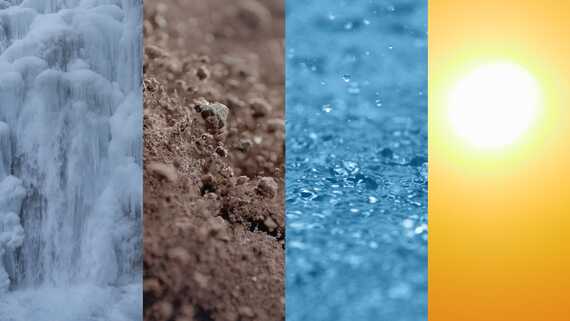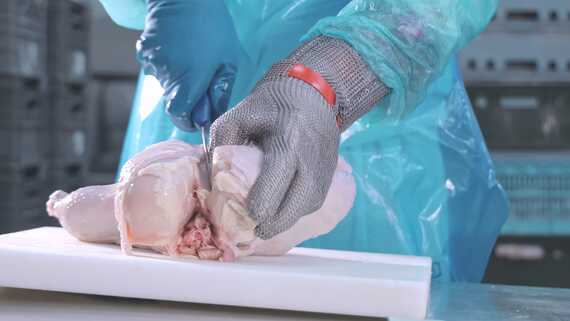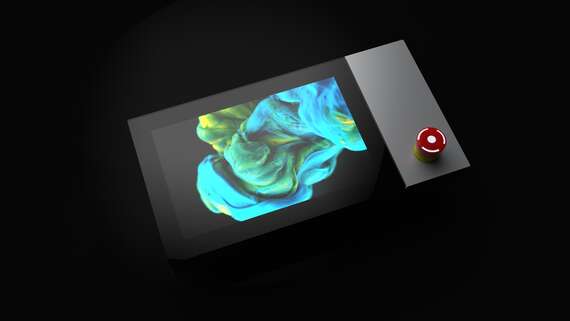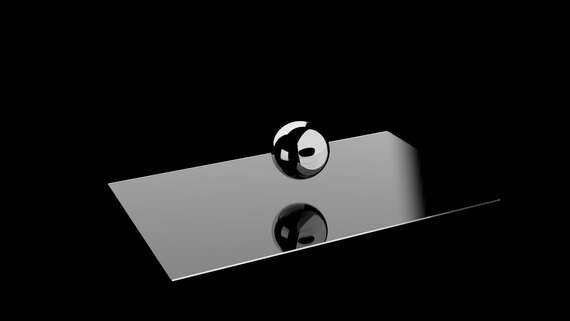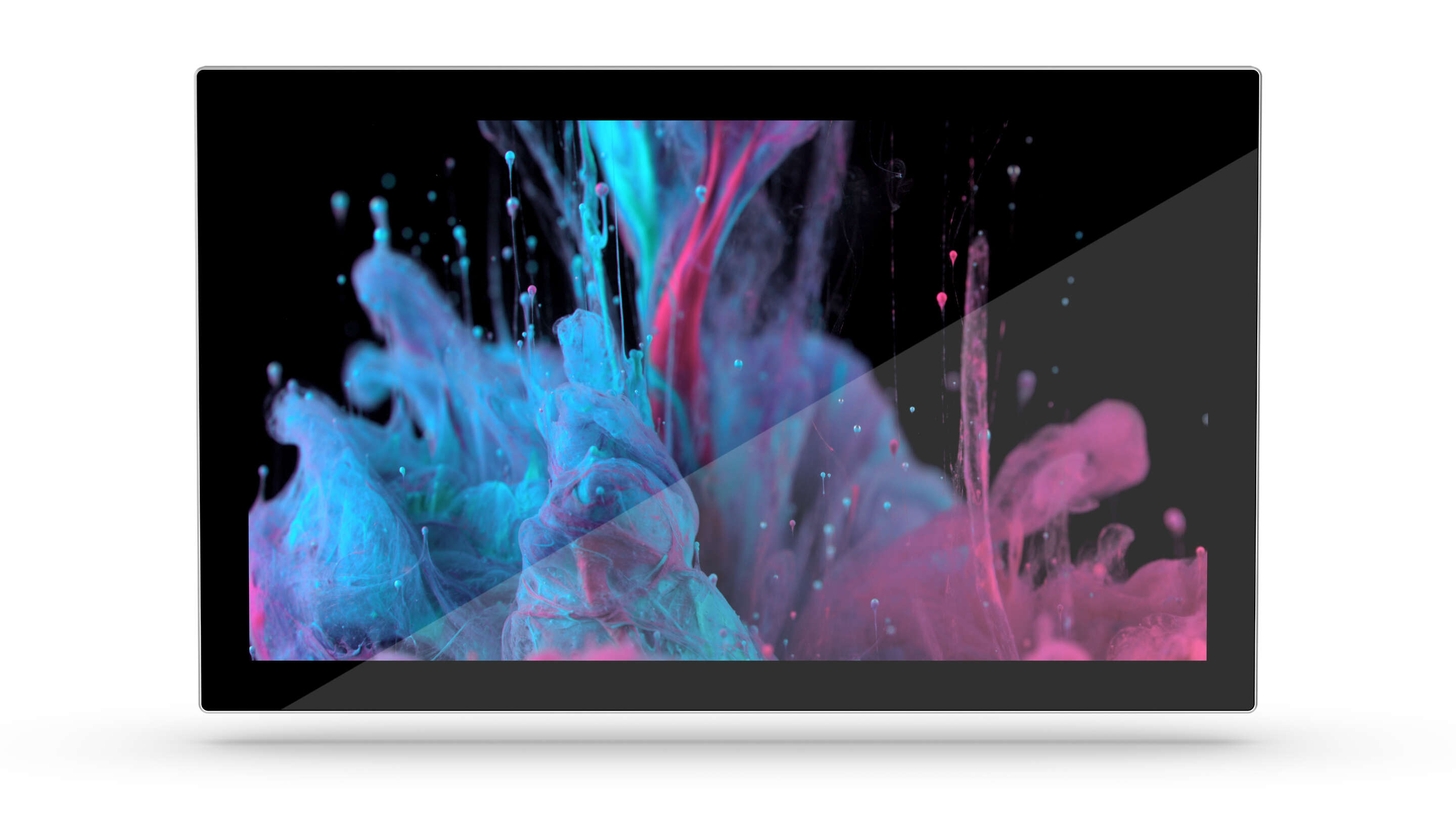Scope
The information in this document applies not to all ULTRA touch screens which use analog resistive touch screen technology applicable to finger, stylus, or gloved hand input. This specification represents the technological possibilities we are offering. Please consult our sales team for a professional consultation if you need a product that goes to the extremes.
Mechanical Characteristics
ULTRA 4, 5 and 8 wire sensors have a conductive glass lower layer, a conductive polyester (PET) middle layer, and a thin laminated glass top layer. ULTRA touch screens can come in both standard and custom sizes, whichever best fits your requirements. Refer to the ULTRA Technical Specifications guide for more detailed information.
Durability/Performance Characteristics
| Input Method | Finger, gloved finger, pen/stylus | |
| Activation Force | 85 grams | |
| Activation Accuracy | 1,5 % of original touch point | |
| Touch Durability | 230 million touches per touch point at activation force | |
| Surface Hardness | 6.5 Mohs | |
| Resolution | 4096 x 4096 typical |
Optical Characteristics
| Transmission | 82% (clear) | |
| Reflection | 9% (clear) | |
| Gloss | 350 GU at 20° (clear) | |
| Haze | 2% |
Environmental Characteristics
| Operating Conditions | -35°C to +80°C | |
| Storage Conditions | -40°C to +85°C | |
| Operating Relative Humidity | 90% non-condensing at 35% | |
| Storage Relative Humidity | 90% non-condensing at 30% up to 240 hours | |
| Chemical Resistance | Impervious to all chemicals that do not degrade glass | |
| Immersion Resistance | May be completely submerged | |
| Fire and Burn Resistance | Can withstand open fire, sparks, and cigarette burns | |
| Operating Altitude Resistance | 10,000 feet (3.048km) | |
| Storage Altitude Resistance | 14,000 feet (4.2607km) | |
| Vibration and Shock Resistance | Can withstand blows from blunt objects | |
| Abrasion Resistance | Can function through even the deepest scratches or abrasions |
Electrical Characteristics
| Electrostatic Discharge | 20 discharges of up to 15 kV |
| Corner to Corner Resistance | 40-60 Ohms, depending on size |
Inspection Criteria
ULTRA touch screens are put through rigorous test and inspection procedures prior to being shipped, but even one of the smallest defects can affect the sensor's performance negatively. Inspection criteria may be found in this section and will help determine whether or not a sensor should be accepted or rejected.
Surface and Internal
| Width | Judgment | Condition |
|---|---|---|
| < 0.015” | Pass | Total length less than 0.050” in a 1” radius circle |
| 0.015” – 0.020” | Pass | Maximum 2 per 1” radius circle |
| >0.020" | Fail | None |
Height
A height defect is a glass defect with a height such as glass chips or shards, and other contaminants trapped beneath the coversheet. Height defects are usually evaluated the same as normal glass defects (section Surface and Internal) with the following addition: if the height of the contaminant can be felt when passing a razor blade across it, it is a failure.
Scratches
| Width | Judgment | Condition |
|---|---|---|
| < 0.001” | Pass | Maximum 5 per sensor, minimum 0.100”, separation |
| 0 .001” – 0.003” | Pass | Maximum 3 per sensor, minimum 0.250”, separation |
| >0.003" | Fail | None |
Cracks
Any sensor with cracks or fractures in the glass is considered a failure.
Edge Chips
| Dimension | Condition |
|---|---|
| Length | < 0.050” |
| Width | < 0.050” |
| Depth | < 1/3 thickness of the glass |
| Quantity | Max 2 per side, chips < 0.015” ignored |
| Spacing | Chips > 0.030" wide must be at least 5" apart |
Stains
| Size | Judgment | Condition |
|---|---|---|
| < 0.020” | Pass | Ignore |
| 0.020” – 0.060” | Pass | Maximum 2 per sensor |
| > 0.060" | Fail | None |
Coversheet Pillowing
The coversheet should always lie parallel to the glass substrate on all ULTRA touchscreens. Some curving towards the glass layer is allowed as long as the top and bottom layers do not come into constant contact. Pillowing occurs when there is an excess amount of air between the coversheet and glass layers, giving the coversheet a puffy, or 'pillowed', shape. This is most often caused by leaks in the touchscreen's seal.
Coversheet and Lamination
Coversheet defects include defects found in either of the armour glass layer and the polyester layer compromising the coversheet, while amination defects refer to defects within the bonding between the layers.
Bubbles
A bubble is a bubble of air trapped within the lamination, between the polyester and armour glass layers. Bubbles are allowed within the following conditions:
- Maximum 2 in a 1" circle
- No bubbles may touch the edge of the armour glass
- No bubbles greater than 0.008" are allowed unless they are in the free zone, where bubbles may be ignored.
- The bubble must less than 0.008"
Delamination
Delamination refers to the separation of the coversheet to the base glass and to the separation of the armor glass from the polyester. No delamination may occur.
Thickness
The thickness of the bonding layer should be in the range of 0.0135 to 0.016", and no thicker.
Contamination
Contamination may refer to other foreign objects observable within the Lamination. The criteria are as follows:
- Contaminations less than 0.005" wide are acceptable
- Contaminations in the range of 0.005" – 0.010" wide are acceptable only if visible against various backgrounds
- Contaminations greater than 0.010" wide are considered a failure.
- Contaminations must be less than 0.250" long to be accepted.
